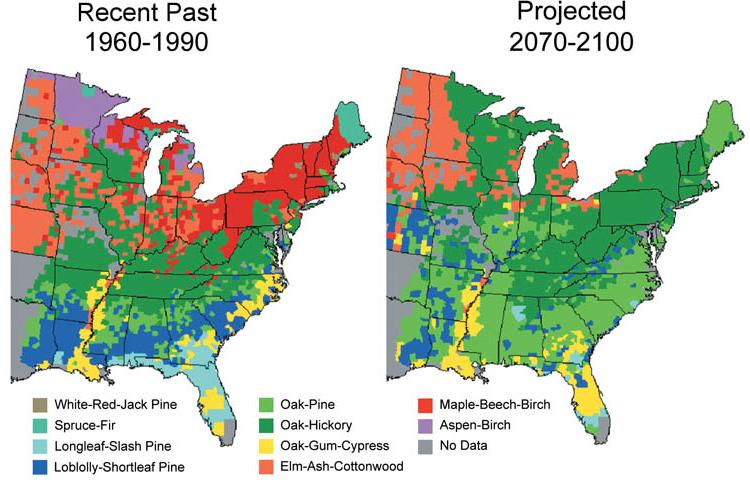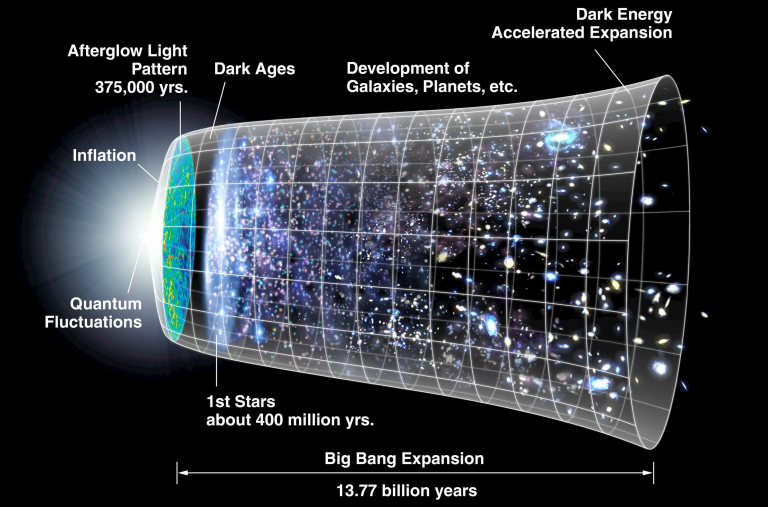Climate change impact on Harvard Forest is becoming increasingly evident, as researchers observe significant transformations in this iconic 4,000-acre forest located in Petersham, Massachusetts. With a burgeoning array of studies focusing on forest ecology, Harvard Forest serves as a pivotal climate change research hub, highlighting the urgency of climate change adaptation strategies. As the warming climate fosters the proliferation of invasive species like the woolly adelgid, the delicate balance of the forest’s ecosystem is increasingly threatened. This phenomenon not only alters the species composition but also brings wild fluctuations in climatic conditions that challenge the health of tree populations. The wealth of historical data collected over decades allows scientists to track these climate trends accurately, emphasizing the need for urgent, informed action to safeguard this ecological gem.
The ramifications of shifting climatic conditions on Harvard Forest are profound and far-reaching, with the area’s rich biodiversity and ecological framework under siege. Researchers from around the world are drawn to this vital site, as ongoing investigations reveal how a changing climate disrupts the natural rhythms and dynamics of forest life. Terms like forest alterations, ecological resilience, and environmental shifts come into play as scientists delve into the challenges presented by invasive flora and fauna, which exacerbate the effects of climate change. Furthermore, the resilience of these ecosystems is tested by rapidly changing weather patterns, underscoring the critical need for effective forest management and adaptive practices. As the narrative unfolds, the health of Harvard Forest stands as a testament to the pressing realities of climate change and the complexities of ecological stewardship.
Understanding Climate Change Impact on Harvard Forest
Harvard Forest, with its rich ecological diversity and extensive data collection, serves as a living laboratory for understanding climate change and its impacts. Researchers have discerned alarming trends over recent decades, noting significant shifts in plant and animal communities within the forest. Notably, the initial observation by senior ecologist David Orwig reveals how warming winters have altered the forest’s character, fostering a rise in black birch trees while the once-dominant hemlocks face decline due to invasive species and climatic pressures. This transformation underscores the direct correlation between observed climate changes and biodiversity patterns in Harvard Forest.
Emery Boose, senior scientist at Harvard Forest, echoes these concerns, revealing that the long-term rise in temperature and changes in precipitation trends have not only redefined the forest landscape but also challenged the resilience of its ecosystems. The community of researchers at Harvard Forest reflects a shared commitment to monitoring these changes, using the extensive historical data available since the 1960s. This data allows scientists to quantify how climate change impacts local ecology, giving rise to a need for climate change adaptation strategies that prioritize the preservation of critical habitats while combating invasive species that threaten the natural balance.
The Role of Research in Mitigating Climate Change Effects
Research at Harvard Forest is crucial for understanding how climate trends are reshaping forest ecosystems. With nearly 100 active projects, the forest has become a focal point for scientists worldwide, who utilize its vast array of data to study the effects of climate change on forest ecology. For instance, studies that artificially heat soil to observe changes in microbial communities provide vital insights into how warming impacts nutrient cycles and species interactions within this ecosystem. This research’s findings are essential not only for Harvard Forest but can also inform broader climate adaptation strategies that other regions can emulate.
The collaborative nature of research at Harvard Forest highlights the significance of long-term ecological monitoring in combating climate change. By exchanging knowledge both locally and globally, researchers ensure that the findings from Harvard Forest resonate beyond Massachusetts. Investigations into invasive species’ proliferation in response to climate change demonstrate the interconnectedness of global ecosystems and underline the need for adaptive management practices. These practices, informed by rigorous scientific inquiry, can help to mitigate the adverse impacts of climate change on both local and distant forests.
Invasive Species: A Growing Threat to Harvard Forest Ecology
Harvard Forest faces an increasing threat from invasive species, particularly the woolly adelgid, which poses a direct danger to hemlock populations vital to the forest’s structure. As climate change leads to milder winter conditions, these pests can thrive and expand their range, exacerbating the decline of hemlocks which are crucial for maintaining soil acidity and providing habitat for various wildlife species. The ecological balance that hemlocks once provided is now undermined, prompting researchers like David Orwig to explore methods for detecting vital resistant strains that could help stem this decline and promote the forest’s recovery.
The invasion of non-native species is a clear indicator of the broader impacts of climate change on forest ecosystems. As temperatures rise and precipitation patterns shift, the delicate relationships between native flora and fauna become increasingly disrupted, leading to a cascade of ecological changes. The proliferation of invasive species is not just an ecological nuisance; it represents a defining challenge for conservation efforts. Solutions must be robust and responsive to these evolving dynamics, addressing both invasive management and adaptive strategies. Such measures are vital for ensuring Harvard Forest remains a resilient biodiversity hotspot amidst shifting climate patterns.
Climate Trends and Their Impact on Biodiversity
The long-term climate trends observed at Harvard Forest indicate not only a rise in average temperatures but also a marked increase in precipitation variability. These climatic shifts have profound implications for biodiversity, noticeably altering the composition of plant and animal species. Data collected since the 1960s has shown that these long-term trends contribute to shifts in species distributions, migration patterns, and even the timing of life cycles, leading to mismatches in ecological relationships such as predator-prey dynamics and pollination cycles.
Researchers at Harvard Forest are focused on understanding how these climate trends will continue to influence biodiversity in the region. Studies highlighting the connection between warmer temperatures and altered growth patterns in species contribute to an emerging narrative about climate resilience. Educating the public and policymakers about these changes enhances conservation efforts, ensuring that actions taken today consider the long-term implications of ongoing climate shifts on the forest’s biodiversity and overall health.
The Importance of Historical Data for Climate Change Adaptation
Harvard Forest’s treasure trove of historical data stretching back to the 1830s provides an invaluable baseline for understanding climate change impacts. This extensive dataset allows researchers to establish patterns and predict future changes, making it a critical asset in developing climate adaptation strategies. The ability to analyze historical temperature and precipitation records enables scientists to differentiate between normal variability and significant long-term trends, providing context for the ecological changes being observed.
By utilizing this historical context, scientists at Harvard Forest can also refine their models for climate change adaptation. These models help predict how species might respond to changing climates and guide conservation efforts towards the most vulnerable ecosystems. The importance of such data cannot be overstated, as it informs both short-term responses to immediate threats and long-term planning aimed at ensuring the ecological integrity of Harvard Forest for future generations.
Community Engagement in Climate Change Research
Community involvement is integral to the mission of Harvard Forest, where the connection between research and public engagement plays a crucial role in addressing climate change. By fostering a sense of stewardship among local residents and visitors, Harvard Forest encourages a shared responsibility for the land and its ecosystems. Educational programs designed to raise awareness about the effects of climate change and invasive species empower community members to participate in conservation efforts and collaborate with researchers.
Such outreach initiatives promote a collective understanding of the challenges posed by climate change, fostering resilience within the community. Engaging with local schools, universities, and environmental organizations creates a robust network of support for ongoing research initiatives. By making climate change research accessible and relevant to the public, Harvard Forest not only drives science forward but also cultivates a culture of environmental awareness and action that extends into the broader community.
The Resilience of Forest Ecosystems to Change
Despite the upheaval caused by climate change and invasive species, forest ecosystems display a notable resilience that emerges in the face of adversity. At Harvard Forest, this resilience is highlighted by the growth of black birches, which are taking the place of declining hemlocks. Such shifts in species composition accentuate the forest’s adaptive potential, wherein new species can thrive in changing conditions, thus contributing to a dynamic ecological balance. However, these changes bring about new challenges concerning species interactions and habitat suitability.
Understanding and promoting resilience in forest ecosystems is crucial to successful climate adaptation strategies. As scientists observe how communities respond to disturbances, they can develop best practices that not only support existing species but also facilitate the integration of new ones into the ecosystem. This ongoing research into resilience underscores the need for adaptive management strategies that consider the fluid nature of climate impact and ecological response.
Future Generational Impacts of Climate Change on Forests
The challenges posed by climate change extend beyond current ecological concerns and resonate profoundly with future generations. The concept of ‘shifting baselines’ highlights how changing environmental conditions can alter perceptions of nature, particularly for those who have yet to experience a stable ecosystem. As Harvard Forest researchers reflect on their observations, they express concern that subsequent generations will lack firsthand knowledge of old-growth forests, hemlock forests, and the biodiversity that accompanies them.
This generational shift emphasizes the urgency of comprehensive climate change education and conservation efforts that ensure future generations appreciate what is at stake. Engaging younger individuals in research, conservation, and stewardship can instill a sense of responsibility and connection to the environment. By equipping the next generation with the knowledge and tools needed to combat climate change, society can work towards a sustainable future that acknowledges and respects the ecological legacy they inherit.
The Need for Innovative Solutions in Climate Change Research
In light of the profound challenges posed by climate change, innovative solutions are critical for effective research and adaptation strategies at Harvard Forest. The ongoing exploration of different methodologies, including artificial heating experiments and comprehensive data analysis, showcases the collaborative spirit of scientists seeking to understand and mitigate the effects of warming temperatures and invasive species. By utilizing technological advancements and interdisciplinary approaches, forest ecologists are paving the way for novel strategies in climate resilience.
Moreover, innovation in forest management practices is increasingly vital as researchers learn from the data collected over decades. Integrating traditional ecological knowledge with modern scientific techniques can lead to multilateral approaches that enhance both conservation outcomes and community engagement. As challenges continue to evolve, the commitment to pioneering new solutions will be essential in safeguarding the ecological integrity of Harvard Forest and beyond.
Frequently Asked Questions
What are the climate change impacts on the Harvard Forest ecosystem?
Climate change has significantly altered the Harvard Forest ecosystem, leading to warmer winters, changes in species composition, and the proliferation of invasive species like the woolly adelgid. These changes disrupt the delicate balance of forest ecology, resulting in shifts from hemlock to birch dominance, impacting soil chemistry and nutrient flow.
How is Harvard Forest researching climate change adaptation strategies?
Harvard Forest conducts rigorous research on climate change adaptation through various projects that monitor long-term climate trends, assess invasive species impacts, and evaluate how different tree species respond to changing environmental conditions. This research informs conservation efforts and ecological management strategies.
What role do invasive species play in the climate change impact on Harvard Forest?
Invasive species, particularly the woolly adelgid, exacerbate the effects of climate change at Harvard Forest by harming vital tree species like hemlocks. As these trees decline, the forest’s ecology shifts, leading to increased growth of black birches, which alter the forest’s structure and functionality.
How are climate trends affecting the species composition in Harvard Forest?
Recent climate trends reveal that warmer and wetter conditions have favored certain invasive species while threatening native trees like hemlocks. The shift in species composition towards black birch represents a significant change in forest ecology, impacting everything from soil composition to animal habitats.
What datasets are used in Harvard Forest climate change research?
Harvard Forest utilizes long-term climate data, including temperature and precipitation records dating back to the 1960s, which helps researchers identify climate change impacts and trends. These comprehensive datasets allow for a nuanced understanding of climate effects on forest ecology.
What are the ecological consequences of warming winters in Harvard Forest?
Warming winters in Harvard Forest have led to thinner snowpacks and a delay in freezing temperatures. This impacts water availability in spring, influences pest populations like the woolly adelgid, and alters the habitats for cold-water fish, resulting in significant ecological shifts.
How does Harvard Forest demonstrate the resilience of forest ecosystems to climate change?
Despite the challenges posed by climate change, Harvard Forest researchers observe that forest ecosystems can exhibit resilience, shown through the adaptability of tree species and the emergence of new ecological dynamics, such as the rise of black birch populations following hemlock decline.
What insights does Harvard Forest offer regarding shifting baselines in forest ecology?
Harvard Forest research highlights the concept of shifting baselines, reflecting how each generation perceives and adapts to environmental changes. For instance, younger generations may not recognize the historical prevalence of hemlock forests, impacting conservation perspectives and approaches.
How can data from Harvard Forest inform future climate action?
The extensive data accumulated at Harvard Forest can guide climate action by identifying effective adaptation strategies, understanding species interactions under changing conditions, and shaping conservation efforts aimed at maintaining biodiversity and ecosystem health in the face of climate change.
| Key Points |
|---|
| Harvard Forest is a research site studying climate change effects. |
| The forest shows observable changes due to warming temperatures. |
| Invasive species like the woolly adelgid are altering forest dynamics. |
| Declining hemlocks are being replaced by black birches, changing the forest composition. |
| Long-term data collection since the 1960s helps identify climate trends. |
| Researchers observe changes in snowfall duration and intensity. |
| The forest community experiences these changes collectively, fostering a sense of connection and concern. |
| The concept of ‘shifting baselines’ highlights how perceptions of ‘normal’ changes over generations. |
Summary
The climate change impact on Harvard Forest is profound and immediate, as evidenced by the many alterations observed in its ecosystem. Researchers at Harvard Forest are witnessing firsthand the shifts in flora and fauna, particularly the decline of hemlocks and the rise of black birches, which fundamentally changes the forest’s character. Over the years, observations such as warmer winters, alterations in snowfall patterns, and invasive species encroachments illustrate the urgent and pressing nature of these climatic changes. This localized understanding of climate change not only deepens the commitment of the forest’s researchers but also highlights the broader implications of environment sustainability and conservation efforts for future generations.





